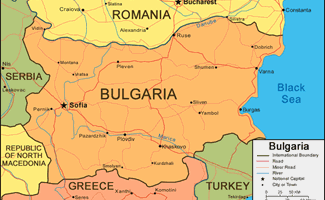Cinema has come a long way since its beginnings in the 1800s. The origins of film can be traced all the way back to the earliest forms of storytelling, like photography and puppetry; film has gone through many transformations to become the multidimensional and layered branch of media that we know today.
As time has gone on films have been used to tell many different types of stories, and they can serve as a great tool of reflection upon the state of the world at a given time. Whilst everyone may be aware of the more typical film genres; horror, comedy, romance and sci-fi to name but a few, there are many more obscure genres that have evolved over the years. Here are just a few that you may not have heard of, and might want to explore.
Mumblecore
Generally low budget and often improvised, mumblecore is a fairly new phenomenon in the film world. A subgenre of independent film, mumblecore is a form of dramatic comedy that tends to focus on average people who are struggling with more mundane, day-to-day issues. Created by filmmakers who are tired of typical movie clichés, these films are the antithesis of the standard Hollywood blockbusters we’ve come to expect. Indie darling Lena Dunham, of ‘Girls’ fame, found early success with mumblecore film Tiny Furniture.
Dogme 95
Created in 1995 by the Danish directors Lars von Trier (Melancholia, Nymphomaniac) and Thomas Vinterberg (Far from the Madding Crowd), Dogme 95 was an avant-garde filmmaking movement that aimed to shift focus onto the traditional values of story, acting, and theme, excluding the use of elaborate special effects or technology. It was an attempt to take back power for the director as an artist, as opposed to the studio. A Dogme film must conform to nine rules; these include shooting on location and using a hand-held camera. Notable films made under Dogme 95’s strict code of conduct include Julian Donkey-Boy and Breaking the Waves.
Lovecraftian
H.P. Lovecraft was an influential writer of pulp horror fiction, and his works have inspired not only legions of fans, but a whole genre of their own. Lovecraftian horror emphasises the cosmic horror of the unknown over gore or shock. His works are populated with ancient beings gazing down upon humanity from afar, and false realities masking a terrible and unknowable truth. One of Lovecraft’s most famous creations is the tentacled cosmic-being Cthulhu, who is the subject of the 2007 film Call of Cthulhu. The Mist, a film based on the Stephen King novella of the same name, tells a tale of fear beyond the scope of human knowledge, and mysterious monsters with a tentacle-like appearance; all typical Lovecraftian archetypes.
Neo-noir
Not to be confused with film noir; a genre typically associated with American crime dramas and psychological thrillers from the 1940s and 50s. Neo-noir takes the common themes and plot devices of film noir, but updates them with modern content, style, visual elements or media. Film noir often featured conflicted antiheroes with nihilistic moral values, was shot in low-key lighting and made use of shadows and unusual camera placement. Neo-noir tends to imitate this format, replicating the sense of anxiety and disillusion that film noir did so well. Sin City, Blade Runner and Pulp Fiction are good examples of this genre.
Nouvelle Vague
Nouvelle Vague or ‘The French New Wave’ was a film movement created in the 1950s and 60s that revolutionised the world of cinema. Disenchanted with the stream of literary period pieces being made in France and written by novelists, a group of filmmakers organised the Nouvelle Vague movement; declaring their desire to make films about more current social issues, experimenting with non-linear structure and using portable equipment. For the time, the changes in filmmaking that came from the movement were nothing short of radical, and lay the foundations for many future genres of film, including some listed here. Some of the greatest works to come from the Nouvelle Vague movement include Hiroshima Mon Amour, Les Bonnes Femmes and Lola.


 Bulgaria The Edge of The Balkan Peninsula – The Black Sea
Bulgaria The Edge of The Balkan Peninsula – The Black Sea